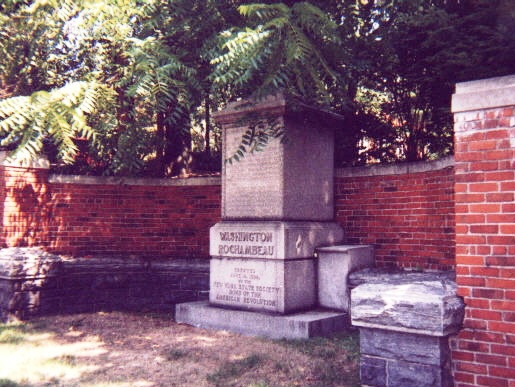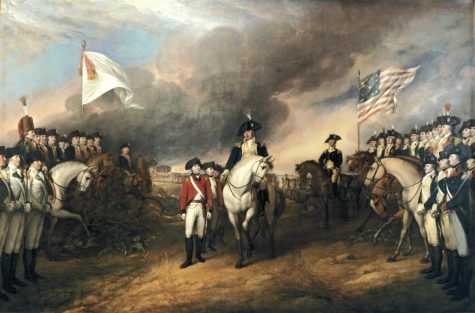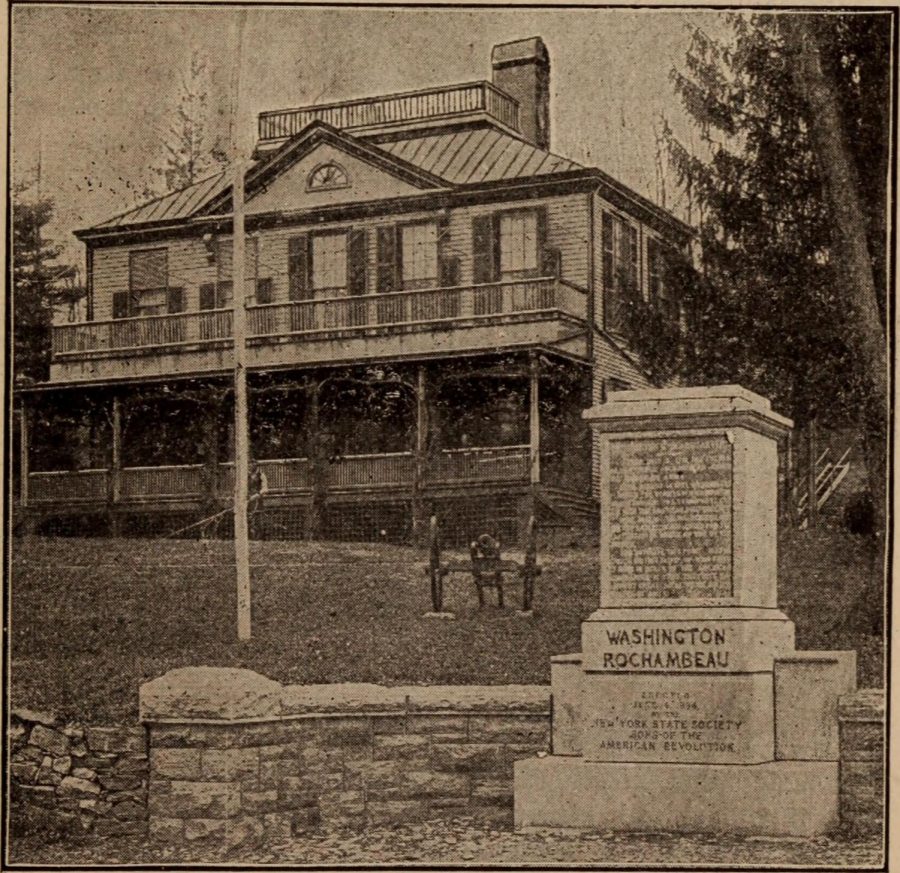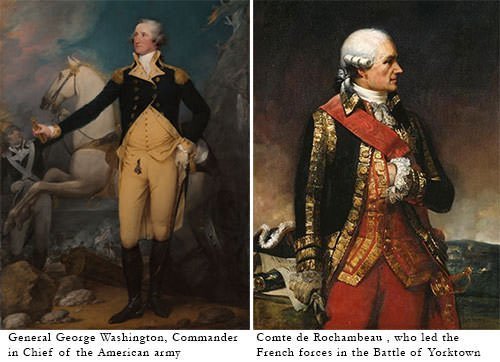The Crossroads of the Revolution: The Myth That Built Dobbs Ferry

June 14 is recognized for the adoption of the United States flag from the Second Continental Congress in 1777. But on national Flag Day in Dobbs Ferry in 1894, an even greater celebration was in the cards.
One thousand Civil War veterans, two naval warships, countless school children, and even the 23rd Vice President of the United States, Adlai Stevenson I (grandfather to Adlai Stevenson II, who would lose the presidential election twice in the 1950s) were all in attendance for what was the greatest party in the history of the Hudson River.
“The monument whose cornerstone we lay at this hour will mark the spot where one of the greatest events of our colonial struggle occurred,” stated Stevenson.
But what led to this comment? What could’ve been so important that it would draw the second-highest-ranking official in all the country to make a visit?
A lie.
Well, sort of. It’s complicated. Welcome to history.
Dr. Richard Borkow is the Dobbs Ferry Village Historian. He is also the author of George Washington’s Westchester Gamble: The Encampment on the Hudson and the Trapping of Cornwallis, which takes a dive into the topics that led to some of the greatest misconceptions in the history of Dobbs Ferry.
“In 1894, people wanted to pay special attention to the history of the American Revolution. It was in Dobbs Ferry that Washington formulated the plan to capture Cornwallis and win the war. The Union League Club of New York City, which formed during the Civil War to support Lincoln, raised the funds to build the Hyatt-Livingston pedestal,” explain Dobbs Ferry Village Historian Richard Borkow.
The claim, and the part where the “misconception” comes into the fray, lies with the location of the monument itself (or rather, where it laid in front of): the Hyatt-Livingston House.
It’s the summer of 1781. The American Revolution is nearing its climax, and the French and American armies are encamped within lower Westchester. For six weeks, from July 6 to Aug. 19, Dobbs Ferry would serve as the “crossroads of the revolution,” as described by American Revolution historian, David Hackett Fischer.
By offering an extensive strategic advantage through the number of locations it offered soldiers to march to, plus its valuable defensive position on high ground, Dobbs Ferry played a key role in the war.
George Washington, then just General- and Commander-in-Chief of the Continental Army, and Jean-Baptiste Donatien de Vimeur de Rochambeau, a French nobleman and general, while still stationed in Westchester, saw that the American effort was slowly beginning to diminish. A lack of food, clothing, and pay had left the army vulnerable. The events in 1781 were the last chance America had at gaining independence.
Despite the military stalemate between the British and Americans, that wouldn’t be enough for independence. Washington knew that only one thing could turn the tide of the war was a decisive military victory.
Washington initially looked to reclaim Manhattan from British control. After finding no potential holes in their defensive lines, he had to go to his secondary plan (and the preferred choice of Rochambeau.) Both generals would march their armies south, to Virginia, to confront the famous British General Charles Cornwallis and his army.
Opposed to taking such a risk, Washington saw the plan as dangerous. But after receiving a letter from French Admiral François Joseph Paul de Grasse on Aug. 14 convinced Washington to go forth with the plan. Requiring both the naval and land attacks to go perfectly, he went forth with the plans.
On Aug. 19, the allied armies broke camp and began their march south out of Dobbs Ferry, leaving from the intersection of Broadway and Ashford. Two months later to the day, Cornwallis would surrender, and American independence would be proclaimed.
The lie in this, and the one that made the Hyatt-Livingston House and Monument famously incorrect, is the claim that Washington based his headquarters there in Dobbs Ferry.
Of the four claims that can be read on the monument, it has been found that three of them are insubstantial.
“We know where the headquarters is. In Hartsdale, there’s a radio station there now. In the back of that, you can still see parts of the house,” stated Borkow.
Insignificant as the small tidbit of information might seem, it is crucial to remember that this monument was such a big deal, that it brought the Vice President of the United States to Dobbs Ferry. It stood for over 100 years, incorrect in its glory.
Benson John Lossing, a popular American historian in the 1800s, went around various important sites for a book he was working on. During this time, he stopped to speak with Archer.
“He wrote what Mr. Archer told him about events at the house in the summer of 1781. Benson Lossing put the assertions into his book, and these later became the substance of a plaque.”
Despite the inaccuracy of Lossing’s book, Borkow emphasized that the fault shouldn’t rest on his shoulders, “Benson was an accurate historian. He had to believe Archer, it’s not like he had Google.”
It would take 107 years for the monument to be corrected. Due to the Sons of the American Revolution (SAR,) the group responsible for putting up the monument only they could correct it.
On July 4, 2001, in a ceremony that was slightly smaller than the one held in 1894, they dedicated a bronze plaque, which, to this day, covers the misconceptions etched in stone.
However, to say that nobody knew that the monument was incorrect for almost 100 years is wrong. In fact, 10 days following the initial 1894 celebration, a letter appears from in the June 24 edition of The Sun, a former New York City-based publication, that challenged the validity of the monument.
“None of these events [mentioned on the monument] occurred at or near Livingston ‘Manor.’ The inscription, if it is placed as planned, will be at fault in its every statement. This could have been easily proved by the people of Dobbs Ferry before the arrangements for the ceremonies had gone as far as to bring in the United States Government, its Vice-President, and its navy, to give formal recognition to the event,” stated A.M. Dyers, the writer of the letter.

“Any standard work on American history would have cleared away these Westchester traditions, and would have made the truth appear.”
This brash statement did not go unnoticed, as Edward Hall, a representative from the SAR, would give a response a week later, in the July 1 issue. Along with a mention of Lossing’s book, Hall goes through each claim to provide what he believed to be the truth.
“If the authorities here quoted are not to be believed, a great many people will have to revise their historical creeds, and will thank your former correspondent for calling attention to the unreliability of authors who have been accepted as credible for decades past.”
About a year later, in the Tarrytown Argus, one columnist took it upon himself to destroy any claim of historical accuracy that the monument possessed. “It is curious if not astonishing that in view of the unquestioned facts so disclosed that the Sons of the American Revolution should have been a party to such a stupid monumental blunder.”
Nineteenth-century conflict aside, it’s clear that at least some knew that the statements were to be inscribed were questionable, so why did it still go through? And how did it stay up for so long? According to Borkow, it may forever be unknown.
“I don’t know the answer, but I assume that the persons in 1894 who funded the monument, the leaders of the Union League Club of New York, believed that the assertions to be put on the monument were correct, even though other persons at the time did not. There was no intent by the Union League Club to misrepresent the facts. I think everybody’s intentions were good.”
So while that question may never get an answer, what one can note is that in a village that has always played second fiddle compared to its neighbors until recently, maybe a claim to fame was necessary for the then-young village.
The National Register of Historic Places seeks to document every place in the United States that can be considered significant.
Within Dobbs Ferry, there are four sites: the Wickers Creek Archeological Site, the South Presbyterian Church, the Dobbs Ferry Post Office, and the Hyatt-Livingston House. Interesting and worthy of being listed, it still lacks compared to many of its neighbors.
Despite the Hyatt-Livingston House burning down on Sep. 1, 1974, the now-corrected monument still stands. In the village that the New York Times once called, “the poor stepsister of its immediate neighbors,” the desire for a piece of glory may have been enough to make a community want to believe that they were significant.
While Dobbs Ferry has since grown and sprouted into something bigger, the Hyatt-Livingston Monument will always serve as a piece that symbolizes that desire to fit in.
From the celebration, controversy, and correction of it, perhaps the misconception itself is the genuine history. If not for it being a puzzling lie, maybe for it being an even greater story.

Steven Keehner was the Managing Editor of the greatest publication on the Hudson.
Hailing from the mediocre Town of Oyster Bay, New York, he enjoys...








